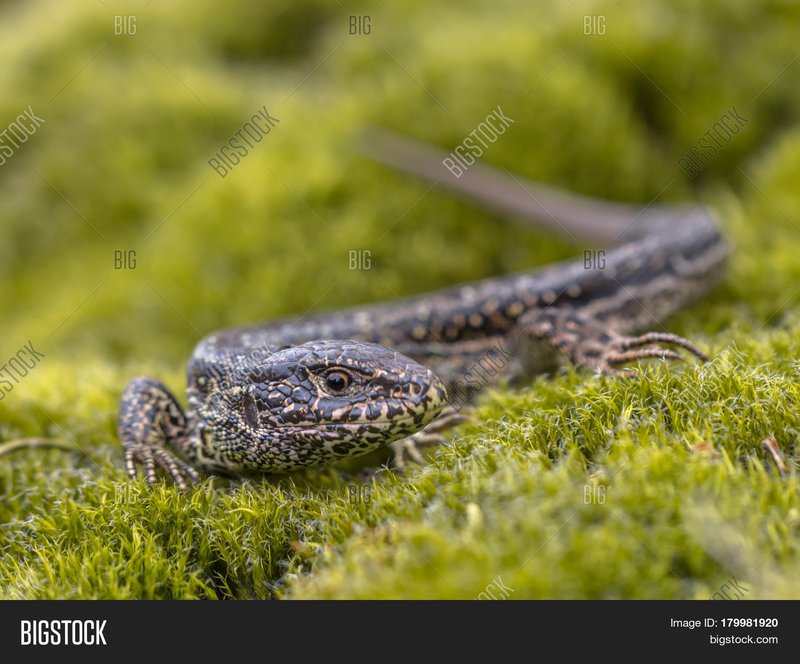
If you’ve ever wandered through sandy terrains or sun-drenched heathlands in Europe, you might have spotted a Sand Lizard basking in the warm sunlight. These little reptiles are not just any ordinary lizards; they are fascinating creatures with unique adaptations that allow them to thrive in their sandy habitats. The Sand Lizard, known scientifically as Lacerta agilis, is one of the few lizard species that dwell primarily in sandy ecosystems. From their vibrant colors to their interesting behaviors, these lizards have captured the attention of nature lovers and researchers alike.
Imagine yourself walking through a sunlit forest, the air warm and filled with the sounds of chirping birds. Suddenly, you catch a glimpse of a small green figure darting across the ground. That’s the Sand Lizard, a creature that has perfectly blended its life with the sands of its habitat. With their ability to change color and quick movements, they are like little flashes of green and brown against the pale backdrop of their environment.
Physical Characteristics
The Sand Lizard is relatively small, typically measuring between 7 to 10 inches long, including its tail. One of the most stunning features is their ability to shift colors based on their environment and mood. During the breeding season, male Sand Lizards can display a vibrant green hue, making them particularly eye-catching as they compete for mates. Females, on the other hand, are generally more subdued in color, showcasing browns or earthy tones to blend into their surroundings and avoid predators.
Additionally, they have a slender, elongated body and a long tail, which can often be more than half the length of their body. Their skin is smooth and scaly, providing protection against the elements and potential threats. You might notice their distinctive pointed snouts, which help them dig into the sandy terrain. This adaptability to their environment helps them stay hidden from both predators and prey.
But there’s more than just looks; Sand Lizards possess traits that enhance their survival. Their powerful legs allow them to sprint quickly across the sand, making a get-away from potential threats or simply racing to catch insects. These adaptations contribute to their role in the ecosystem, controlling insect populations while serving as prey for larger predators.
Habitat and Distribution
Habitat: Sand Lizards primarily thrive in dry, sandy habitats such as heathlands, coastal dunes, and open woodlands. They favor districts with plenty of sun exposure, as they are ectothermic, meaning they rely on external heat sources to regulate their body temperature. You may find them basking on warm, flat rocks or stumps, soaking in the sun’s rays to energize themselves for a hunt.
These lizards make their homes in areas with sparse vegetation, often in sandy soils that allow for easy burrowing. They can often be seen darting in and out of patches of grass or under low shrubs, cleverly using the environment to hide from predators like birds and larger mammals. Depending on the region, Sand Lizards can be found across Europe and parts of Asia, with their populations concentrated in specific areas where the habitat aligns with their preferences.
However, habitat destruction, urbanization, and climate change pose significant threats to their populations. As their native environments shrink, so do their chances of survival. Conservation efforts are crucial in maintaining suitable habitats for these creatures, ensuring that future generations can enjoy the vibrant presence of Sand Lizards in nature.
Diet and Feeding Habits
The diet of a Sand Lizard primarily consists of small insects and invertebrates. You might find them munching on ants, grasshoppers, spiders, and beetles. They are active hunters, using their keen eyesight to spot potential prey from a distance. When they catch sight of something tasty, they make a quick dash, flicking out their tongue to catch their meal.
Interestingly, their feeding habits also play a role in their health and survival. During warm months, Sand Lizards need to eat frequently to maintain their energy levels. They exhibit a curious behavior of sunning themselves after meals, perhaps to aid digestion and absorb more heat. So, if you’re watching a Sand Lizard basking in the sun, it’s likely just enjoyed a delicious snack!
Additionally, these lizards have been observed demonstrating a degree of foraging intelligence. They can learn to associate specific habitats with food availability, which is quite impressive for such small creatures. This adaptability aids their survival, helping them thrive even when faced with fluctuating food sources in their ecosystems.
Reproduction and Lifespan
Typically, Sand Lizards breed during the spring, making it a period of vibrant activity as males display their colorful attire to attract females. After a courtship ritual involving displays of color and movement, females lay their eggs in sandy soils or loose ground in June. Each clutch can contain anywhere from 5 to 14 eggs, depending on the female’s health and environmental conditions.
Once laid, the eggs incubate for a few weeks before hatching, usually around August. The young lizards are miniature versions of adults, equipped to fend for themselves almost immediately. However, they must be cautious as they are small enough to become prey for various predators in their habitat.
In terms of lifespan, Sand Lizards can live about 5 to 6 years in the wild. However, those in captivity can live much longer, demonstrating how environmental factors play a role in their longevity. Understanding their life cycle gives you a window into the world of these fascinating reptiles and highlights the importance of preserving their habitats.
| Characteristic | Details |
| Scientific Name | Lacerta agilis |
| Size | 7 to 10 inches (including tail) |
| Coloration | Green and brown, color changes during breeding season |
| Diet | Insects and invertebrates |
| Habitat | Sandy soils, heathlands, open woodlands |
| Lifespan | 5 to 6 years in the wild; longer in captivity |
Conservation Status
Due to their specialized habitat requirements, Sand Lizards are susceptible to habitat destruction, making their conservation a pressing issue. Urban development, intensive agriculture, and climate change have led to significant habitat loss across Europe. Conservation organizations have recognized the need to protect and restore these fragile ecosystems to ensure the survival of Sand Lizard populations.
Efforts to conserve Sand Lizards involve habitat management strategies such as creating protected areas, re-establishing heathlands, and educating the public about the importance of these lizards and their habitats. Engaging local communities in conservation practices has proven beneficial in ensuring their habitats remain intact. You might even see signs warning road users to be cautious about Sand Lizards crossing as part of these conservation efforts!
In addition to habitat protection, breeders and research institutions are working on captive breeding programs to help bolster Sand Lizard populations. These initiatives aim to reintroduce healthy, young lizards back into their natural habitats, increasing genetic diversity and helping stabilize populations. With concerted efforts, it’s possible to ensure that future generations will get a chance to see these incredible lizards in the wild.
Behavior and Activity
Sand Lizards are most active during the warmer months, especially from spring to early summer when they engage in breeding activities. They prefer to bask in the sun, using the warmth to regulate their body temperature. If you’ve ever seen one soaking up the sun, you can appreciate how they seem to enjoy those peaceful moments, completely still except for the occasional flick of their tongue.
As solitary creatures, Sand Lizards are territorial and will defend their space against intruders, especially during the breeding season. Males are particularly aggressive, showcasing their vibrant colors and performing displays to ward off rivals. Surprisingly, even though they are small, their tenacity and resilience allow them to hold their ground, which is essential for successful breeding.
When threatened, a Sand Lizard can easily dash into its burrow or hide among foliage to escape predators. Their swift movements, combined with their ability to blend into the environment, often make them hard to spot. If you’re ever lucky enough to see one in the wild, it’s a reminder of nature’s intricate dance of survival—each creature playing its part in the rhythm of life.
Interaction with Humans
While Sand Lizards generally prefer to keep their distance from humans, they can occasionally be spotted by curious individuals exploring their habitats. Many people enjoy watching these lively lizards, especially nature enthusiasts and photographers who appreciate their vibrant colors and swift movements. However, it’s important to respect their space and allow them to thrive in their natural environments.
Unfortunately, some people may see Sand Lizards as pests, especially in gardens or cultivated lands. This view overlooks the ecological role these lizards play in controlling insect populations and contributing to the overall health of their ecosystems. Educating the public on the importance of Sand Lizards can foster a more positive relationship between humans and these reptiles.
Community initiatives aimed at habitat restoration and conservation help bridge the gap between nature and people. By focusing on ways to coexist with Sand Lizards, we can ensure that future generations can enjoy the beauty and intrigue of these remarkable reptiles.
FAQ
Where can I find Sand Lizards?
You can typically find Sand Lizards in sandy habitats such as heathlands, coastal dunes, and open woodlands throughout Europe and parts of Asia. They often thrive in areas with plenty of sunlight and sparse vegetation where they can hide and hunt for insects.
How fast can a Sand Lizard run?
Sand Lizards are quite agile and can sprint quickly across sandy terrain to escape predators or catch prey. While specific speeds can vary, they are known for their quick movements, which allow them to dart into hiding spots in an instant.
Are Sand Lizards dangerous?
No, Sand Lizards are not dangerous to humans. They are generally shy and prefer to avoid contact with people. If threatened, their first instinct is to flee rather than confront danger. They do not possess venom or any aggressive behavior toward humans.
What do Sand Lizards do in winter?
During winter, Sand Lizards enter a state of dormancy. As ectothermic creatures, they require external warmth to survive, so they become inactive when temperatures drop. They often burrow underground or seek shelter under leaves or rocks until the warmer spring months return.
How long do Sand Lizards live?
In the wild, Sand Lizards can live around 5 to 6 years, but those in captivity often enjoy a longer lifespan due to controlled conditions that protect them from predators and harsh environmental factors.
Can you keep a Sand Lizard as a pet?
While it’s possible to keep Sand Lizards as pets, it’s crucial to understand their specific habitat and dietary needs. They require ample space, heat, and humidity to thrive, and keeping them in a proper environment can be challenging. Always consider adoption from reputable breeders and ensure you can provide proper care.
Do Sand Lizards change color? Why?
Yes, Sand Lizards can change color, particularly during the breeding season when males display vibrant greens to attract females. This color change is influenced by temperature, mood, and environment, allowing them to blend in or stand out as needed, enhancing their survival.
What do Sand Lizard eggs look like?
Sand Lizard eggs are typically small, white, and roundish, often laid in sandy soil. After a few weeks of incubation, they hatch into miniature versions of the adults, ready to face the world on their own.
How can I help conserve Sand Lizards?
You can help conserve Sand Lizards by supporting local conservation initiatives, preserving their natural habitats, and educating others about the importance of these reptiles. Avoid disturbing their environments and promote sustainable practices in areas where Sand Lizards reside.
Are Sand Lizards protected by law?
In many areas, Sand Lizards are protected by law due to their declining populations and habitat loss. It is illegal to harm, capture, or sell them without proper permission. Always check local regulations regarding wildlife to understand how you can coexist safely with these remarkable creatures.

